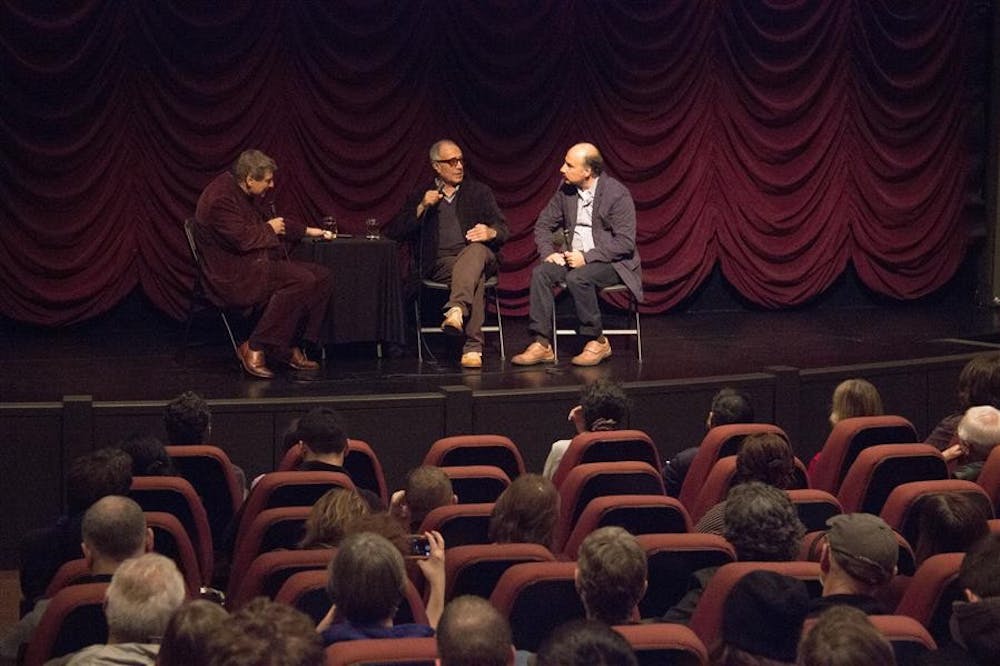Legendary Iranian filmmaker Abbas Kiarostami spoke about his life and work Monday afternoon at IU Cinema as part of the Jorgensen Guest Filmmaker Lecture Series.
Introducing the director, IU Cinema Director Jon Vickers lauded him as the “pinnacle to IU Cinema’s existence” and referred to him as “one of the world’s leading artists.”
Vickers’ praise is not without precedent. French director Jean-Luc Goddard once said, “Film begins with D.W. Griffith and ends with Abbas Kiarostami.” Martin Scorsese, to the humble embarrassment of Kiarostami, said, “Kiarostami represents the highest level of artistry in the cinema.”
Since Kiarostami began making films in the early 1970s, the director has exhibited ability for unconventional technique.
However, it was not until after the 1979 Iranian Revolution that he emerged with the individualistic style he is known for.
The films that Kiarostami made following the revolution introduced themes and styles the director would pursue and develop later in his career, such as the use of unprofessional “non-actors,” thematic complexity and settings in rural Iranian villages.
In an interview with Film Comment in 2000, the director acknowledged that his innovations were rooted in the desire to cultivate a “deeply poetic cinema.”
“In my mind, the abstraction we accept in other forms of art — painting, sculpture, music, poetry — can also enter the cinema,” he said. “I feel cinema is the seventh art, and supposedly it should be the most complete since it combines the other arts. But it has become just storytelling, rather than the art it should really be. I want to create the type of cinema that shows by not showing.”
Kiarostami addressed the abundance of narrative in contemporary cinema as well as his creative process and philosophy of using ”non-actors.”
“Once I have an idea, the first thing I do is find the character,” he said using a translator. “I draw my idea from the crew or characters. I tailor my idea to the character in front of me. I do not alter the character. His physique, I do not change.”
His unconventional techniques have garnered him significant praise, including a Palme d’Or at the 50th International Cannes Film Festival and an officership of the Légion d’honneur from the Ministry of Culture and Art of France.
“There’s a simplicity, an authenticity to the concepts,” said Ali Ghazinejad, an IU Ph.D. student and Iranian native. Nevertheless, critics such as the late Roger Ebert have not spared the director from blows.
“I thought I had seen an emperor without any clothes,” the critic wrote about “Taste of Cherry,” Kiarostami’s Cannes prizewinner. “Is ‘Taste of Cherry’ a worthwhile viewing experience? I say it is not.”
Richard Peña, professor of film at Columbia University and Kiarostami’s interviewer, did not bring the director’s criticism into the conversation. His questions centered on his minimalist cinematography, Kiarostami’s relationship with his crew and his feelings about his own role as director.
“The most important part of my directing is choosing the character. Once I’ve chosen them, I follow them,” Kiarostami said. “If you allow yourself to work with non-actors, you will find another dimension.”
Iranian filmmaker speaks at IU Cinema

Get stories like this in your inbox
Subscribe



